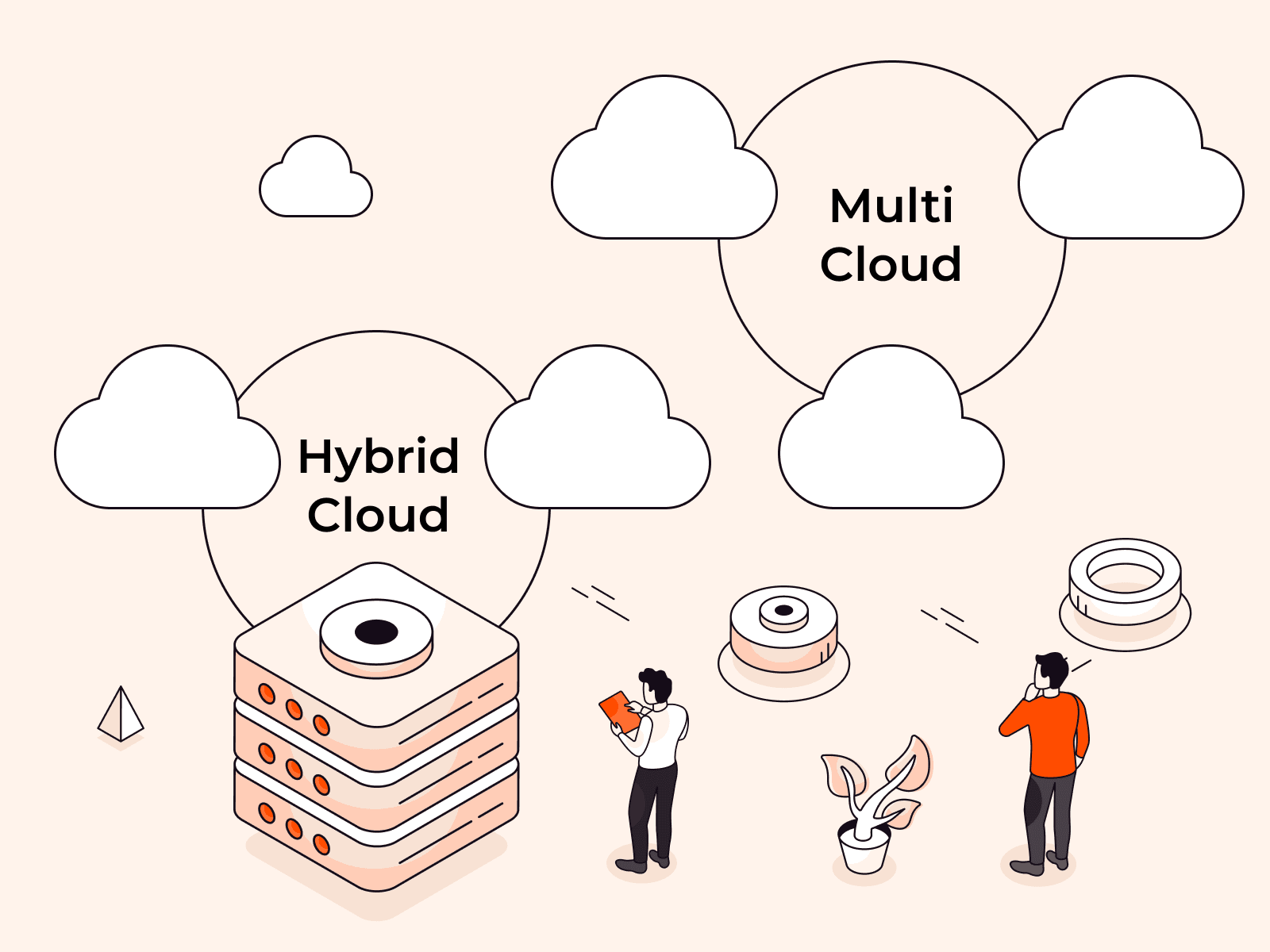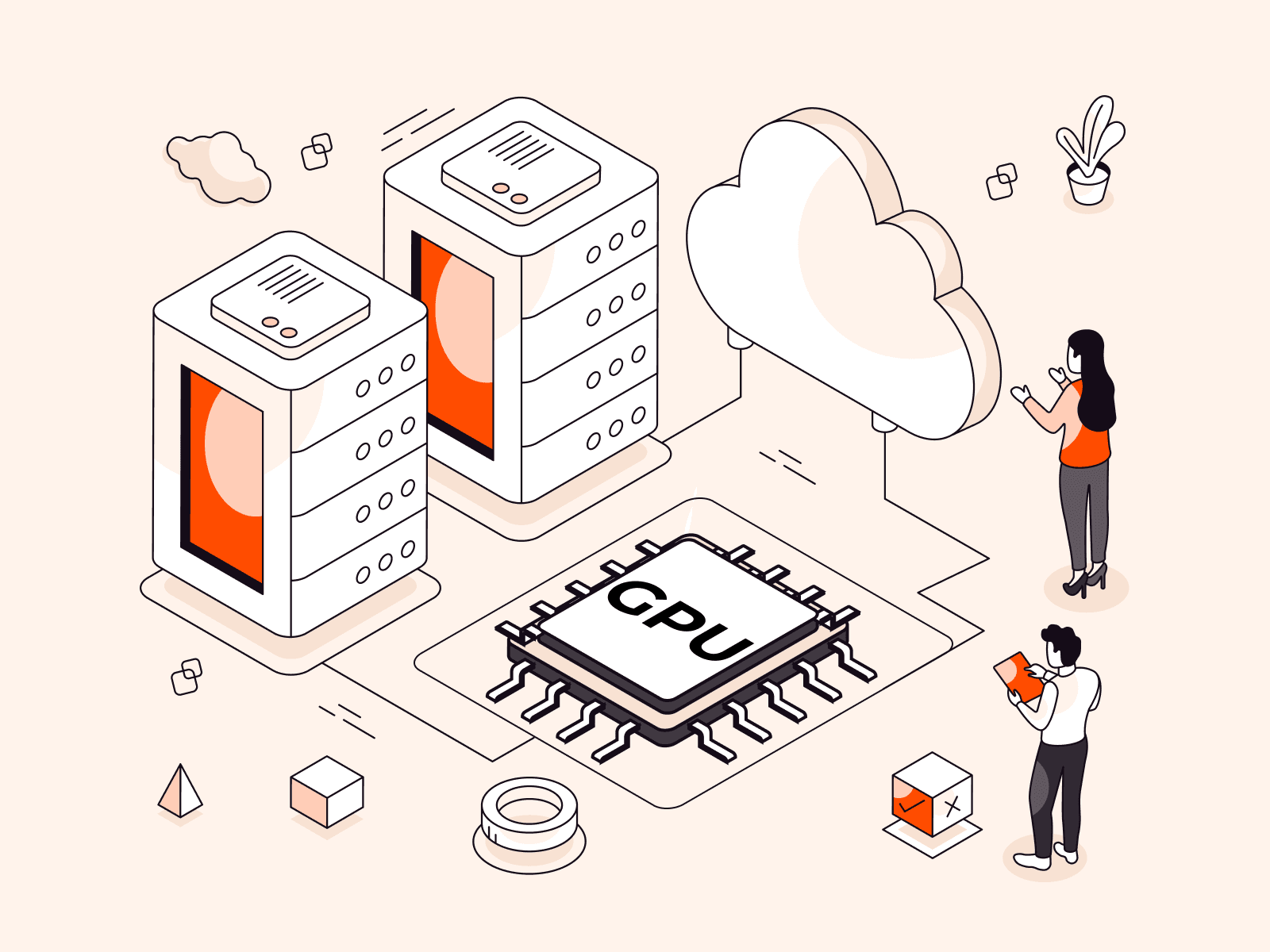Web performance mistakes can carry a high price, resulting in websites that yield low conversion rates, high bounce rates, and poor sales. In this article, we dig into the top 10 mistakes you should avoid to boost your website performance.
1. Slow or Unreliable Web Host
Your site speed begins with your web host, which provides the server infrastructure and resources for your website. This includes the VMs and other infrastructure where your code and media files reside. Three common host-related problems are as follows:
- Server location: The further away your server is from your users, the slower the site speed and the poorer the experience for your website visitors. (More on this under point 7.)
- Shared hosting: Shared hosting solutions share server resources among multiple websites, leading to slow load times and spotty connections during peak times due to heavy usage. Shared VMs can also impact your website’s performance due to increased network traffic and resource contention.
- VPS hosting: Bandwidth limitations can be a significant issue with VPS hosting. A limited bandwidth package can cause your site speed to decrease during high-traffic periods, resulting in a sluggish user experience.
Correct for server and VM hosting issues by choosing a provider with servers located closer to your user base and provisioning sufficient computational resources, like Gcore CDN. Use virtual dedicated servers (VDS/VPS) rather than shared hosting to avoid network traffic from other websites affecting your site’s performance. If you already use a VPS, consider upgrading your hosting plan to increase server resources and improve UX. For enterprises, dedicated servers may be more suitable.
2. Inefficient Code, Libraries, and Frameworks
Poor-quality code and inefficient frameworks can increase the size of web pages, consume too many resources, and slow down page load times. Code quality is often affected by syntax, semantics, and logic errors. Correct these issues by writing clean and simple code.
Errors or inefficiencies introduced by developers can impact site performance, such as excessive API calls or memory overuse. Prevent these issues by using TypeScript, console.log, or built-in browser debuggers during development. For bugs in already shipped code, utilize logging and debugging tools like the GNU debugger or WinDbg to identify and resolve problems.
Improving code quality also involves minimizing the use of large libraries and frameworks. While frontend frameworks like React, Vue, and Angular.js are popular for accelerating development, they often include extensive JavaScript and prebuilt components that can bloat your website’s codebase. To optimize for speed, carefully analyze your use case to determine if a framework is necessary. If a static page suffices, avoid using a framework altogether. If a framework is needed, select libraries that allow you to link only the required components.
3. Unoptimized Code Files and Fonts
Even high-quality code needs optimization before shipping. Unoptimized JavaScript, HTML, and CSS files can increase page weight and necessitate multiple HTTP requests, especially if JavaScript files are executed individually.
To optimize code, two effective techniques are minification and bundling.
- Minification removes redundant libraries, code, comments, unnecessary characters (e.g., commas and dots), and formatting to reduce your source code’s size. It also shortens variable and function names, further decreasing file size. Tools for minification include UglifyJS for JavaScript, CSSNano for CSS, and HTMLminifier for HTML.
- Bundling groups multiple files into one, reducing the number of HTTP requests and speeding up site load times. Popular bundling tools include Rollup, Webpack, and Parcel.
File compression using GZIP or Brotli can also reduce the weight of HTTP requests and responses before they reach users’ browsers. Enable your chosen compression technique on your server only after checking that your server provider supports it.
4. Unoptimized Images and Videos
Some websites are slowed down by large media files. Upload only essential media files to your site. For images, compress or resize them using tools like TinyPNG and Compressor.io. Convert images from JPEG, PNG, and GIF to WebP and AVIF formats to maintain quality while reducing file size. This is especially beneficial in industries like e-commerce and travel, where multiple images boost conversion rates. Use dynamic image optimization services like Gcore Image Stack for efficient processing and delivery. For pages with multiple images, use CSS sprites to group them, reducing the number of HTTP requests and speeding up load times.
When adding video files, use lite embeds for external links. Standard embed code, like YouTube’s, is heavy and can slow down your pages. Lite embeds load only thumbnail images initially, and the full video loads when users click the thumbnail, improving page speed.
5. No Lazy Loading
Lazy loading delays the rendering of heavy content like images and JavaScript files until the user needs it, contrasting with “eager” loading, which loads everything at once and slows down site load times. Even with optimized images and code, lazy loading can further enhance site speed through a process called “timing.”
Image timing uses the HTML loading attribute in an image tag or frameworks like Angular or React to load images in response to user actions. The browser only requests images when the user interacts with specific features, triggering the download.
JavaScript timing controls when certain code loads. If JavaScript doesn’t need to run until the entire page has rendered, use the defer attribute to delay its execution. If JavaScript can load at any time without affecting functionality, load it asynchronously with the async attribute.
6. Heavy or Redundant External Widgets and Plugins
Widgets and plugins are placed in designated frontend and backend locations to extend website functionality. Examples include Google review widgets that publish product reviews on your website and Facebook plugins that connect your website to your Facebook Page. As your website evolves, more plugins are typically installed, and sometimes website admins forget to remove those that are no longer required.
Over time, heavy and unused plugins can consume substantial resources, slowing down your website unnecessarily. Widgets may also contain heavy HTML, CSS, or JavaScript files that hinder web performance.
Remove unnecessary plugins and widgets, particularly those that make cURL calls, HTTP requests, or generate excessive database queries. Avoid plugins that load heavy scripts and styles or come from unreliable sources, as they may contain malicious code and degrade website performance.
7. Network Issues
Your server’s physical location significantly impacts site speed for end users. For example, if your server is in the UK and your users are in China, they’ll experience high latency due to the distance and DNS resolution time. The greater the distance between the server and the user, the more network hops are required, increasing latency and slowing down site load times.
DNS resolution plays a crucial role in this process. Your authoritative DNS provider resolves your domain name to your IP address. If the provider’s server is too far from the user, DNS resolution will be slow, giving visitors a poor first impression.
To optimize content delivery and reduce latency, consider integrating a global CDN with your server-side code. A CDN stores copies of your static assets (e.g., container images, JavaScript, CSS, and HTML files) on geographically distributed servers. This distribution ensures that users can access your content from a server closer to their location, significantly improving site speed and performance.

8. No Caching
Without caching, your website has to fetch data from the origin server every time a user requests. This increases the load time because the origin server is another physical hop that data has to travel.
Caching helps solve this problem by serving pre-saved copies of your website. Copies of your web files are stored on distributed CDN servers, meaning they’re available physically closer to website viewers, resulting in quicker load times.
An additional type of caching, DNS caching, temporarily stores DNS records in DNS resolvers. This allows for faster domain name resolution and accelerates the initial connection to a website.
9. Excessive Redirects
Website redirects send users from one URL to another, often resulting in increased HTTP requests to servers. These additional requests can potentially crash servers or cause resource consumption issues. To prevent this, use tools like Screaming Frog to scan your website for redirects and reduce them to only those that are absolutely necessary. Additionally, limit each redirect to making no more than one request for a .css file and one for a .js file.
10. Lack of Mobile Optimization
Forgetting to optimize for mobile can harm your website’s performance. Mobile-first websites optimize for speed and UX. Better UX leads to happier customers and increased sales.
Optimizing for mobile starts with understanding the CPU, bandwidth, and memory limitations of mobile devices compared to desktops. Sites with excessively heavy files will load slowly on mobiles. Writing mobile-first code, using mobile devices or emulators for building and testing, and enhancing UX for various mobile device types—such as those with larger screens or higher capacity—can go a long way to optimizing for mobile.
How Can Gcore Help Prevent These Web Performance Mistakes?
If you’re unsure where to start in correcting or preventing web performance mistakes, don’t worry—you don’t have to do it alone. Gcore offers a comprehensive suite of solutions designed to enhance your web performance and deliver the best user experience for your visitors:
- Powerful VMs: Fast web hosting with a wide range of virtual machines.
- Managed DNS: Hosting your DNS zones and ensuring quick DNS resolution with our fast Managed DNS.
- CDN: Accelerate both static and dynamic components of your website for global audiences.
With robust infrastructure from Gcore, you can ensure optimal performance and a seamless experience for all your web visitors. Keep your website infrastructure in one place for a simplified website management experience.
Need help getting started? Contact us for a personalized consultation and discover how Gcore can supercharge your website performance.
Related articles
Subscribe to our newsletter
Get the latest industry trends, exclusive insights, and Gcore updates delivered straight to your inbox.






